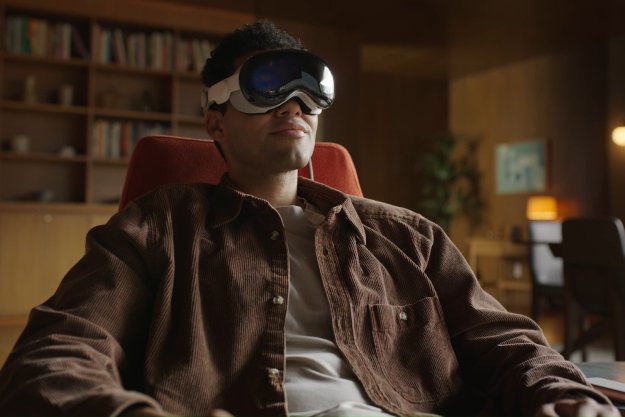Japanese electronics giant Sharp has unveiled its latest 3D display technology: a touchscreen LCD that can display 3D images users can perceive without awkward 3D glasses. The downside? The technology only works well when a user’s eyes are a fixed distance from the screen—for the 3-inch displays Sharp was showing, that’s about 30 cm (or one foot). The displays can switch between 2D and 3D modes, and Sharp is pitching the technology as ideal for smartphones and other portable devices—especially since the display is about the same as a conventional 2D LCD.

The technology works by sending different images to viewers’ right and left eyes, the same way traditional 3D glasses work but building the separation into the display itself. Sharp says the technology may be applied to larger devices like televisions in the future; however, applications may be limited since the effect works best with a fixed distance between the viewer and the display. However, aside from televisions, the technology may have numerous applications in mobile devices, cameras, virtual reality gear, and arcade games.
The displays Sharp demonstrated measured 3.4 inches, offered a 854 by 480-pixel resolution, brightness of 500 cd/m², and 1,000:1 contrast ratios. The displays could switch between landscape and portrait modes. Sharp said it applied advances in CG-Silicon technology to reduce the wiring width in the LCD panel while simultaneously enabling more light to pass through the panel while reducing crosstalk.
Sharp has tried to sell 3D gear before, but the efforts largely fell flat due to poor image quality, but the company is confident its new efforts are far brighter and clearer than its competitors’. Sharp plans to begin mass production of the 3D-capable LCDs in the next six months.

Editors' Recommendations
- The 6 best desktop PCs for 3D rendering in 2024
- The one AMD 3D V-Cache processor you should avoid at all costs
- This one feature could prevent motion sickness, but the Vision Pro doesn’t have it
- Nice try, Intel, but AMD 3D V-Cache chips still win
- Save $100 on this compact, multi-purpose home 3D printer


